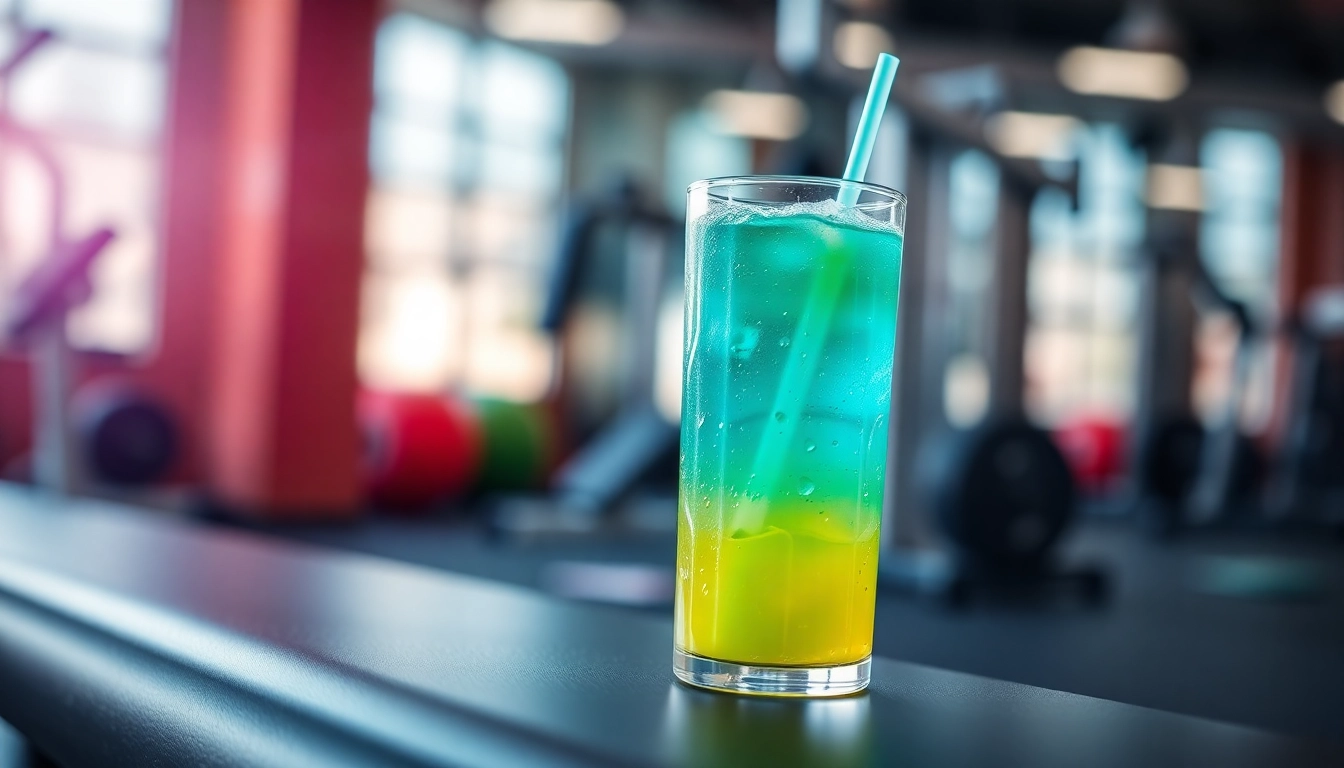Understanding Muscle Recovery
Muscle recovery is a crucial aspect of physical training, impacting performance, endurance, and overall health. Recovery involves a complex interplay of physiological processes that enable the body to heal and grow stronger after physical exertion. By understanding the elements that contribute to effective muscle recovery, athletes and fitness enthusiasts can optimize their training results and prevent injuries. Factors such as hydration, nutrition, rest, and active recovery all play important roles. For detailed insights into musclerecovery, one must consider not just exercise and effort, but also what happens post-workout.
The Science Behind Muscle Repair
When performing resistance or high-intensity exercises, muscle fibers sustain microscopic tears. This process is known as muscle microtrauma. While it might sound detrimental, it is a necessary part of muscle building. The body responds to these micro-injuries through a series of physiological processes aimed at repairing and strengthening the affected tissues. Satellite cells, a type of stem cell, activate during recovery to promote muscle repair and regeneration. These cells fuse to the damaged fibers, helping them grow back stronger, enhancing muscle hypertrophy and overall strength. The recovery process can be divided into several phases, characterized by unique biochemical changes.
Importance of Hydration for Muscle Recovery
Hydration is vital not only during workouts but also post-exercise. Water plays a significant role in nutrient transportation, digestion, and waste removal. Dehydration can lead to increased muscle soreness and prolonged recovery times. Studies suggest that consuming adequate fluids post-workout can significantly improve recovery outcomes. Electrolytes, including sodium and potassium, also help maintain fluid balance and support nerve and muscle function. Therefore, both water intake and electrolyte replenishment should be priorities in any recovery strategy.
Key Nutrients for Effective Recovery
The nutrients consumed post-exercise significantly impact muscle recovery. Key macronutrients include:
- Proteins: Essential for muscle repair. Protein sources such as lean meats, dairy, legumes, and plant-based proteins should be included in every post-workout meal.
- Carbohydrates: They replenish glycogen stores depleted during exercise. Opt for complex carbohydrates found in whole grains, fruits, and vegetables.
- Fats: Healthy fats, like avocados, nuts, and olive oil, support overall health and can help reduce inflammation.
Additionally, vitamins and minerals, particularly antioxidants such as vitamins C and E, play critical roles in combating oxidative stress that occurs after intense workouts. This combination of nutrients leads to more effective recovery and improved performance in subsequent workouts.
Common Challenges in Muscle Recovery
Overcoming Delayed Onset Muscle Soreness (DOMS)
Delayed Onset Muscle Soreness (DOMS) is a common occurrence after intense exercise, characterized by stiffness and pain that peaks 24-72 hours post-workout. Although DOMS is a normal physiological response, it can be uncomfortable and may hinder performance in subsequent training sessions. To manage and alleviate DOMS, various strategies can be employed:
- Active Recovery: Engaging in light activities such as walking, swimming, or cycling can promote circulation and help reduce soreness.
- Cold Therapy: Applying ice packs or taking cold baths immediately after intense workouts can diminish inflammation and slow down the metabolic process that leads to DOMS.
- Massage and Foam Rolling: These techniques can aid muscle relaxation, improve circulation, and reduce muscle tightness.
Understanding the recovery process helps in implementing these strategies effectively, ensuring minimal disruption to training schedules.
Identifying Signs of Poor Recovery
Recognizing the signs of inadequate recovery is essential for preventing injuries and ensuring that athletes can train effectively. Symptoms of poor recovery include:
- Persistent muscle soreness lasting longer than usual.
- Increased fatigue and lack of energy.
- A diminished performance in training sessions.
- Elevated resting heart rate.
- Frequent illnesses or infections.
If these signs are noted, it may be beneficial to reassess one’s training load, nutrition, and recovery strategies. Adjusting workout intensity and prioritizing rest days can help address these issues.
Addressing Nutritional Deficiencies
Nutritional deficiencies can severely affect muscle recovery and overall performance. A balanced diet that includes a variety of foods ensures that the body receives all essential vitamins and minerals. Common deficiencies that athletes should look out for include:
- Iron: Essential for oxygen transport in the blood; lack can lead to fatigue and decreased performance.
- Vitamin D: Important for bone health and muscle function; low levels can impair recovery.
- Magnesium: Aids in muscle contraction and relaxation; deficiency can lead to cramps and spasms.
Regular check-ups and possibly consulting with a nutritionist can help identify and rectify these deficiencies, ensuring optimal performance.
Best Practices for Muscle Recovery
Hydration Techniques: What Works Best?
Implementing effective hydration strategies is crucial for muscle recovery. Drinking sufficient water before, during, and after exercise can greatly enhance repair processes. Some effective hydration techniques include:
- Sipping water regularly: Instead of drinking large amounts at once, it is beneficial to sip throughout the day.
- Electrolyte beverages: Consider using sports drinks that replenish electrolytes during longer workouts, especially in hot weather.
- Monitoring urine color: A simple way to check hydration status; light yellow indicates optimal hydration, while darker colors suggest a need for more fluids.
Incorporating these techniques not only aids recovery but also enhances overall workout performance.
The Role of Sleep in Muscle Recovery
Sleep is one of the most crucial components of recovery. Quality sleep allows the body to repair muscles, synthesize proteins, and release growth hormones, all essential for muscle recovery, repair, and growth. Studies show that inadequate sleep can lead to impaired recovery, decreased performance, and increased risk of injuries. Tips for improving sleep quality include:
- Establishing a routine: Going to bed and waking up at the same time daily helps regulate the body’s internal clock.
- Creating a restful environment: A dark, cool, and quiet bedroom promotes better sleep.
- Avoiding screens before bed: The blue light emitted by phones and computers can hinder the production of melatonin, the sleep hormone.
Prioritizing sleep hygiene can significantly enhance recovery outcomes, allowing individuals to return to training faster and stronger.
Stretching and Foam Rolling Techniques
Incorporating stretching and foam rolling into recovery routines can alleviate muscle tension and reduce soreness. Stretching enhances flexibility, improves range of motion, and may assist in relieving tight muscles. Foam rolling, a form of self-myofascial release, helps break up knots in muscles and enhances blood flow. Here are effective techniques:
- Static stretching: Holding stretches for 15-30 seconds post workout can help lengthen tightened muscles.
- Dynamic stretching: Incorporating movement during stretching before workouts prepares muscles for exertion.
- Foam rolling: Targeting sore muscles with a foam roller for 1-2 minutes per muscle group can aid muscle recovery and enhance mobility.
Using these techniques to unwind muscles post-workout is foundational in muscle recovery practices.
Integrating Supplements into Your Muscle Recovery Routine
Popular Supplements for Faster Recovery
Supplements can complement dietary intake, providing the necessary components for faster muscle recovery. Some of the most widely used supplements include:
- Protein Powder: Whether from whey, casein, or plant-based sources, protein powders help meet required protein intake efficiently.
- BCAAs (Branched-Chain Amino Acids): These essential amino acids can reduce soreness and promote muscle recovery when taken before or after workouts.
- Creatine: Known for enhancing strength and muscle mass, creatine can also help reduce muscle cell damage and inflammation after intense exercise.
Individuals should research the appropriate dosages and consult with healthcare professionals before integrating new supplements into their regimen.
Natural Foods That Enhance Muscle Recovery
Incorporating specific foods into the post-workout diet can assist in muscle recovery. Foods rich in antioxidants, healthy fats, and anti-inflammatory properties support recovery processes. Noteworthy foods include:
- Pineapple: Contains bromelain, which may help reduce inflammation and pain.
- Fatty Fish: Salmon and mackerel provide omega-3 fatty acids that can support muscle recovery and reduce soreness.
- Cherries: Tart cherry juice has been shown to reduce muscle soreness and aid recovery.
Combining these foods into a balanced diet provides the nutrients necessary for optimal recovery and performance.
Consultation with Healthcare Professionals
Before embarking on new supplementation or dietary changes, consulting with healthcare professionals or nutritionists is advisable. They can provide personalized recommendations based on individual health needs, fitness goals, and existing dietary patterns. Ensuring a tailored approach can enhance the effectiveness of recovery strategies while minimizing potential side effects or interactions.
Measuring Recovery Progress
Using Technology to Track Recovery
In today’s tech-driven world, various wearable devices and applications can help track recovery metrics. From heart rate variability to sleep patterns, technology offers data that can provide insights into how well an individual is recovering post-exercise. Monitoring these metrics can help individuals adapt their training to optimize recovery, such as:
- Heart Rate Monitor: Tracking heart rate variability can indicate stress levels and readiness for exercise.
- Sleep Tracking Devices: These monitor sleep patterns, providing insights into sleep quality and duration.
- Activity Trackers: Evaluating daily activity levels can help in adjusting rest days and workout intensity accordingly.
Using technology for recovery tracking helps athletes make informed decisions about their training regimens.
Performing Recovery Assessments Regularly
Regular assessments can gauge recovery progress and inform necessary adjustments in the training plan. Consider implementing methods such as:
- Functional Movement Screen (FMS): Assessing movement patterns gives insights into potential restrictions and helps prevent injuries.
- Subjective Recovery Questionnaires: Regularly asking questions related to fatigue, soreness, and overall wellbeing can provide qualitative insights into recovery.
- Performance Tests: Conducting regular tests can measure improvements in strength and endurance, helping to evaluate overall progress.
Regularly conducting these assessments ensures that training programs remain effective and tailored to individual recovery needs.
Adjusting Your Routine Based on Recovery Data
The ability to adapt and modify one’s training regimen based on recovery data is essential for long-term success. Utilizing insights from tracking technologies and assessments can help optimize workouts by:
- Modifying Workout Intensity: Reducing the load during periods of inadequate recovery ensures that progress is sustained without risking injury.
- Altering Rest Days: Scheduling additional rest days when uneven recovery times are noted can prevent overtraining.
- Individualizing Training Programs: Building programs based on individual data—like fitness goals, current health status, and responses to training—maximizes effectiveness and sustainability.
The integration of recovery data into training decisions fosters a more effective and personalized approach to athlete care.



